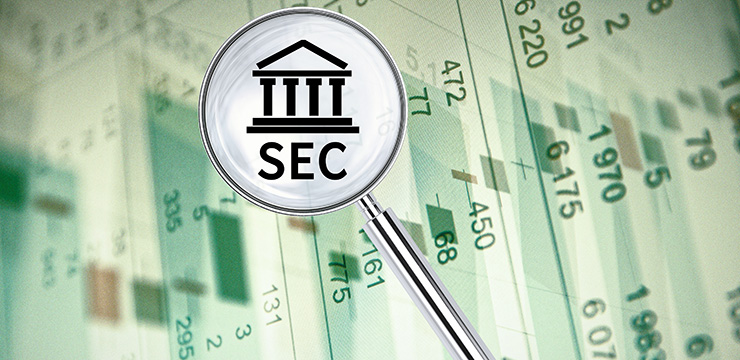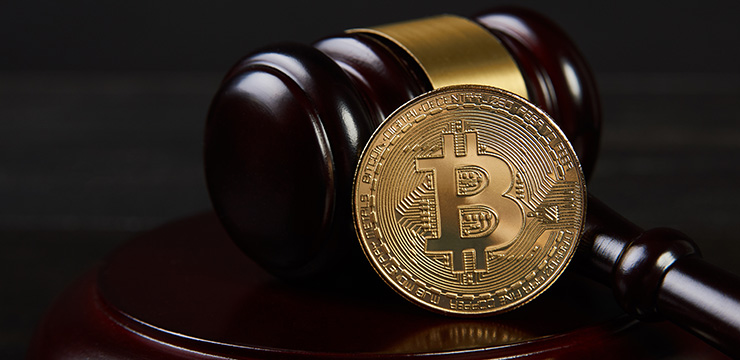The regulation of cryptoassets is a question that has been troubling lawmakers and regulators across the globe. This new phenomenon has had a small but significant effect on how financial services function and facilitate new opportunities, but that has also brought risks and regulatory challenges. Currently, cryptoassets (a term preferred over cryptocurrency by regulators) are not, in themselves, regulated. Some cryptoassets will fall within the regulatory regime by way of representing or acting as traditional securities or other regulated financial instruments.

In October, the Cryptoasset Taskforce published its long-awaited report. The report sets out an overview of cryptoassets and the underlying technology before assessing their current, and potential future, role in the financial system as well as the risks and potential benefits. The report concludes with recommendations and ‘next steps’.
By way of background, the Cryptoasset Taskforce was launched by the Chancellor of the Exchequer in March 2018 and is made up of representatives from the Financial Conduct Authority (FCA), HM Treasury and the Bank of England.
In general, the report found that particular risks would need to be dealt with, but provides few concrete regulatory recommendations, and tends to focus on consultation, clarification of existing regulation and increasing awareness of the risks. It is important to note that this is not necessarily a bad thing and the overall message appears to be positive, particularly for those thinking about issuing cryptoassets (for example by way of an initial coin offering (ICO)). The Cryptoasset Taskforce seems less nervous of cryptoassets than other bodies, particularly the UK’s Treasury Committee (see our take on the UK’s Treasury Committee’s report here).
The report divides recommendations into distinct areas, explaining where regulatory action should be taken and where a ‘wait and see’ approach is more suitable.
Preventing financial crime
This is one of the few areas where action will be, and has been, taken. The concern over the use of cryptoassets for financial crime and in particular the transfer of criminal proceeds is often the cornerstone to any discussion on cryptoasset regulation. The report acknowledges that the use of cryptoassets for criminal activity is low, although increasing.
The Fifth Anti-Money Laundering Directive (5MLD) will require firms to bring certain activities relating to cryptocurrency within the scope of anti-money laundering regulation, for example fiat-to-crypto exchange firms. However, the UK government plans to go further and will consult on proposed actions in early 2019. Part of this consultation will be whether firms based outside the UK will be required to comply with AML obligations when providing services to UK consumers.
Regulating financial instruments that reference cryptoassets
From 1 August 2018, there has been a restriction on the sale of contracts for difference (CFDs) that reference cryptoassets. This is part of a European effort, led by ESMA. The restriction, although renewed on 1 November 2018, is only temporary until the FCA implements a domestic solution. The FCA is expected to consult on derivatives referencing exchange tokens and whether there should be a prohibition on the sale of these to retail investors by the end of 2018. This prohibition would not include those derivatives that reference cryptoassets that qualify as securities.
The FCA has also stated that it will not authorize or approve the listing of a transferable security or a fund that references exchange tokens unless it is confident in the integrity of the underlying market and that the other regulatory criteria are met. The FCA also confirmed that it has not approved the listing of any exchange-traded products with exchange tokens as the underlying asset.
Clarifying the regulation of security tokens
Tokens which represent securities or that have the same features of securities (‘security tokens’), fall within current regulation. However, it is not always clear whether certain tokens fall into this category, and there is not much guidance on this.
The FCA will consult by the end of this year on new perimeter guidance on the way regulation applies to security tokens. This additional clarity will be useful for helping token issuers understand whether, and to what extent, the tokens they issue fall within the regulatory regime and what, if any, authorization or permission is needed. However, it is important to note that this will not extend the regime. Security tokens are currently caught by regulation while other tokens remain outside it; this will not change. The FCA consultation will relate to further guidance on how to identify whether tokens are security tokens.
Consulting on extending the regulatory perimeter for ICOs
While the guidance noted above will not affect the regulatory status of any tokens, the FCA will also consider whether there needs to be any changes to the regulatory perimeter when it comes to cryptoassets. Notably, the FCA is concerned about when tokens may be comparable to security tokens but structured in such a way that they are not security tokens and therefore unregulated.
A consultation in early 2019 will consider whether such cryptoassets exist and whether an extension of the regulatory regime is required.
Addressing the risks of exchange tokens
Early 2019 will see a consultation on whether and how exchange tokens should be regulated. These tokens do not currently fall within the regulatory perimeter. It is not clear whether the clarification of the current regulatory regime, and how it applies to cryptoassets, or the extension of the regulatory perimeter for tokens which act like security tokens, will be sufficient to allay the regulators’ fears.
Ensuring a coordinated international approach
The Cryptoasset Taskforce acknowledges that an international approach is essential to mitigate the risks for consumers. There is continuous conversations with different international organizations, and the report outlines that the UK intends to take a role advocating for international bodies to address these issues.
Improving consumer awareness
The report reiterates messages from regulatory and governmental bodies that consumers should be cautious when purchasing cryptoassets. The authorities will continue to improve public awareness of the risks of purchasing cryptoassets.
Maintaining financial stability
The Cryptoasset Taskforce does not currently believe that cryptoassets pose a material threat to financial stability, either in the UK or globally. However, it acknowledged that this is a developing and growing area and that risks could emerge. This will continue to be monitored by the Bank of England.
In a subsequent speech, Christopher Woolard, Executive Director of Strategy and Competition at the FCA, hoped that ‘if someone in 10 years’ time was to pause on the world in 2018, they would see our taskforce work as a further step along our journey of encouraging beneficial innovation to thrive in the UK, but in a context in which financial crime is combatted, market integrity is safeguarded and consumers are adequately protected from harm’.
The important point to note here is that the taskforce is a step in the journey. While the report infers that regulation is coming, it does not have any immediate effect on the regulatory sphere. Assuming consultations are released in late 2018/early 2019, one can expect that any formal regulation is still a way off. However, this is no bad thing. The Cryptoasset Taskforce’s insistence on an international approach is encouraging; inconsistent regulation across jurisdictions will be less effective for an instrument which, by its very nature, is borderless. Nevertheless, guidance on the current regulatory regime, and how it applies to cryptoassets, will be welcomed as soon as possible by issuers and those who work in this world.
Learn more from this Blockchain alert.








